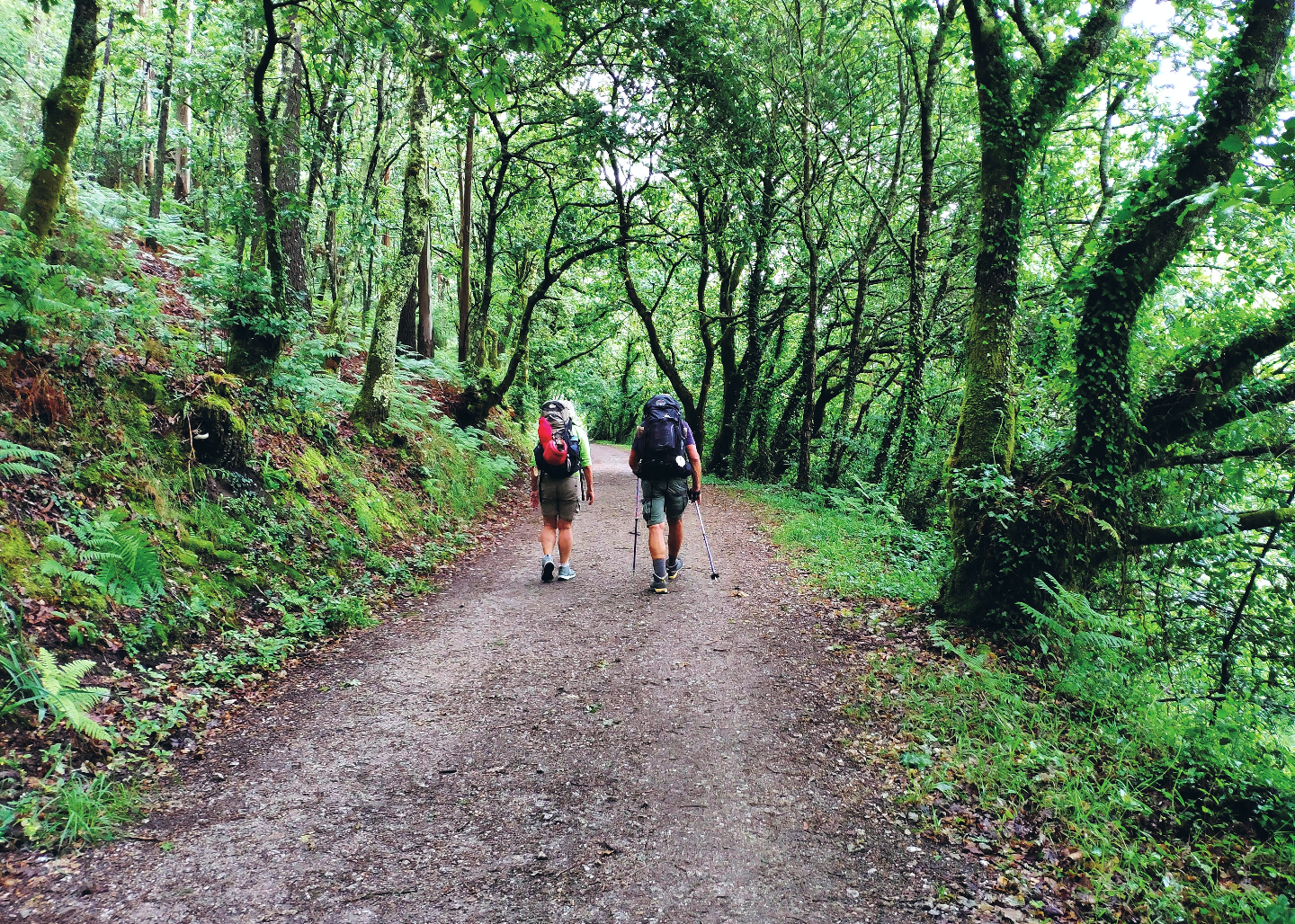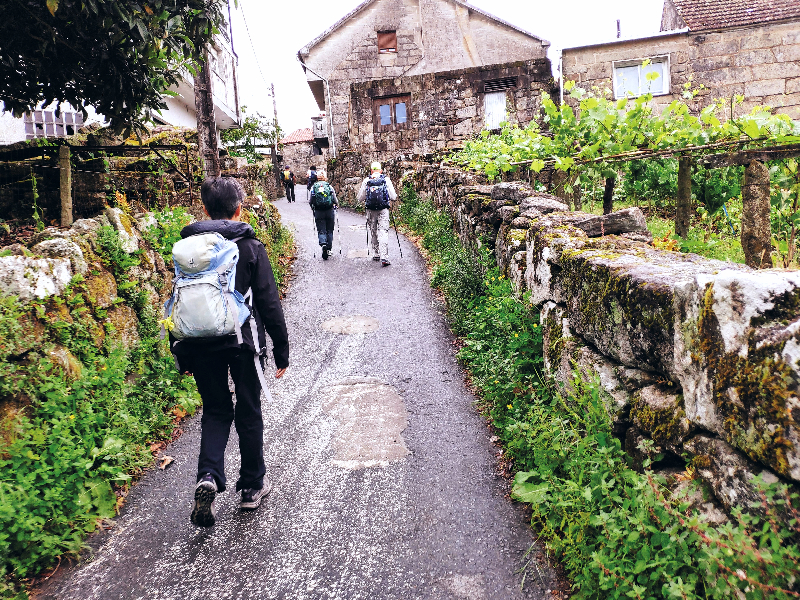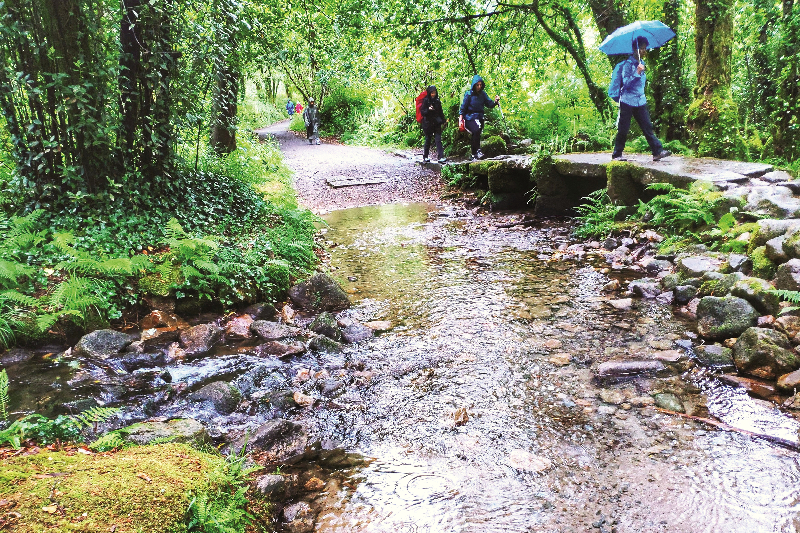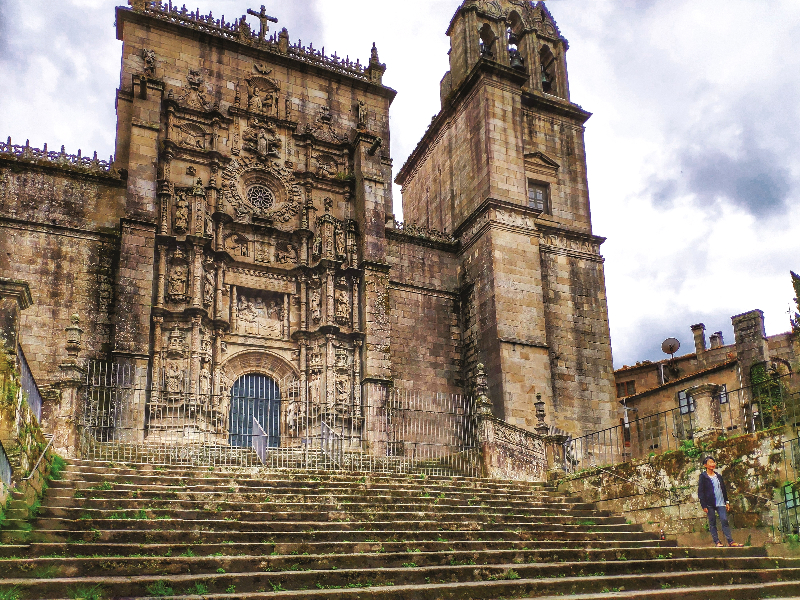
Much of the walk is along well-maintained forest paths (All photos: Lee Yu Kit)
An iconic symbol of the Camino de Santiago pilgrimage, the scallop shell has a series of converging lines which fuse at its base. It has been pointed out that this is representative of the many routes that lead to the cathedral at Santiago de Compostela in Spain.
It is said that the remains of Jesus’ disciple St James the Greater was brought and buried here by his followers after his beheading in Jerusalem. What was once an unmarked grave has since grown into the great cathedral of today.
Since the discovery of the remains in the 9th century, pilgrims have undertaken the journey called the Camino de Santiago or the Way of St James, to pay their respects. It is described as one of the three great pilgrimages of the Christian faith, the others being to Rome and to Jerusalem.
“Camino” in Spanish means way or road, aptly encompassing the seeking of the way by pilgrims through the centuries. Pilgrimages took months, or years. The journey was fraught with peril. Pilgrims lost their way and fell prey to bandits as well as illness. An unknown number died, never to reach the cathedral. Hospitals as well as albergues, hostels that provide simple, dormitory-style shelter, were set up for the pilgrims.
On reaching the cathedral, pilgrims of yore burnt their worn clothes, a shedding of the old life, and donned clean vestments issued by the church. Often, a scallop shell was issued to them on the completion of their journey. Although this practice has long been discontinued in favour of a paper certificate, or compostela, the emblem of the scallop shell continues to be used.
stone.jpg

The Camino, popular in the Middle Ages, suffered a decline due to the Black Death and political upheavals that swept through Europe, but there has been a revival in the 20th century, with over 200,000 travellers taking the routes every year since 2013. Many come for religious reasons, but many undertake the journey for other purposes.
The Pilgrims’ Museum in Santiago de Compostela lists 39 different routes. The most popular, the Camino Frances (French Way), starts in France; the second most popular Camino Portugues (Portuguese Way), draws travellers from Portugal. The Camino del Norte (Northern Way), Camino Primitivo (Original Way), Camino Ingles (English Way) are just some of the other routes.
The modern traveller has it easy compared to the pilgrims of the past. A comprehensive modern infrastructure — from well-placed stone markers, well-maintained paths, modern communications, transport and smartphone apps — and the social structure of friendly locals, cafes, hostels and hotels dependent on business from the thousands who travel the way make the pilgrimage a safe and enjoyable experience.
To qualify for a compostela, the traveller has to walk the last 100km of the route, or cycle or ride a horse the last 200km. Businesses and churches along a Camino route can stamp his credencial or “passport” as proof that he has passed that way. The credencial is then presented at the church office in Santiago de Compostela for examination.
My journey started in a Spanish border town called Tui, which has a walled city with a pre-Roman history and is part of the Camino Portugues inland route. I collected my first stamp at the Tui Cathedral, a 12th-century Gothic style construction built on a small hill in the walled city with wending cobblestone alleys, and stayed in an endearing modern hotel cunningly built into a centuries-old stone building.
walkers.jpg

I had booked the Camino walk with one of the companies that provide the service, prebooking accommodation and arranging for bulky luggage to be sent on to the next destination daily, so all I needed to carry was a light backpack. There is no one way of walking the Camino — from carrying everything needed in rucksacks to having a guide accompany you or having available a support vehicle.
My walking journey started easily: brass scallop shells were embedded into the stone walkway of old Tui town, while blue and yellow markers on milestones marked the way out in the fields and forests. All I had to do, especially at intersections and turns, was look out for the marker.
I left Tui for cultivated fields and forests, the path undulating and wending gently beside streams, over old stone Roman-era bridges, into the backyards of small villages.
The countryside was lush with verdure, and it was cool: the Spanish province of Galicia has a wet and mild climate due to moisture-laden winds from the North Atlantic, and the Camino seeks out small byways and forest paths, largely bypassing towns and busy roads.
I hardly needed to resort to online navigation tools on my smartphone; besides seeming out of place in the rustic, fairy-tale world, it simply wasn’t necessary. It felt, at times, that I had walked into the past — narrow roads and clear roadside brooks, fields and woodlands untroubled by global concerns of warming weather and pandemics. It was easy to breathe walking along the sun-dappled paths and waving green fronds.
Houses had stone garden walls with letter boxes and a bigger box beneath, labelled pan, for the local bread delivery service to drop off freshly baked bread.
In the early afternoon, I wandered into the town of O Porrinho, for the respite of a seat in a local café, and a large bocadillo, a Spanish baguette with a filling of choice, often cheese with jamon.
rain1.jpg

My accommodation was a country cottage away from town — a stone farmhouse-like affair with a sprawling garden where a surprisingly sophisticated dinner had been prepared. Enjoyed with background music, the three-course meal of finely-prepared appetiser, grilled pork loin, salad and dessert was cooked by the homeowner who had 20 years’ experience working in a professional kitchen. One of many small and happy discoveries of the journey.
Each day, I awoke in a different town, in a different hotel — a 200-year-old stone cottage; a gorgeous, gracious mansion built over a forested river gorge; a farmhouse cluttered with the implements of a rural farm and an urban hotel. The programme was simple; after breakfast, I would hoist up my backpack and walk, sometimes in the company of newly met travellers, sometimes on my own.
There were small cafés to stop by for a hot coffee or tortilla. Locals would nod and offer a “buen camino”, an utterance of blessing and acknowledgment. When it rained, I donned a rain poncho and trudged on. When it was sunny and bright, I wore sunglasses and a hat. I averaged 20km a day, varying between the mid-teens and about 30km. The weather fluctuated from chilly mornings to warm, blue-skied afternoons; sometimes it rained continuously.
I met many fellow walkers, especially when the many different routes began to merge nearer to our final destination. There were solo walkers, couples, families, groups of friends, many with large rucksacks on their backs. Some had walked multiple Caminos before; for some it was the first time. A couple had met on a walk several years ago, got married, had a child and settled down in Spain. A woman had walked with her dog for over 100km; a couple had hiked over 800km in a month; a single woman had walked 260km in eight days.
pontevedra.jpg

The terrain was gently undulating and overwhelmingly rural except for the occasional path through a town. I had my credencial stamped at churches, cafés and albergues. As each day melded into the next, the walk distilled itself into a single purpose — to the next turn of the road, the next milestone and the promise of a hot meal and soft bed. Distractions and the cares of my regular self, with its thousand concerns and wandering curiosities, melted away.
I had not started with single-mindedness, but it came to me on the rural paths, under the shade, walking in the rain, in vineyards and pausing by ancient stone crosses called cruceiros — green with moss and weathered by time — that gave comfort to tired pilgrims centuries ago.
On the last day, I walked into Santiago de Compostela, following the natural rise of the land along modern streets into the cool, stony alleys of the Old Town, which was bustling with people, sights and sounds, and into the flagstone-paved square before the great cathedral.
A 100km or more is trivial in a modern vehicle and a ruthlessly efficient highway. It is almost anachronistic to slow down and walk the distance, connect with oneself and experience the true pace of being human. To arrive at the cathedral under one’s own effort gave meaning and significance and an understanding of why thousands of people pry themselves from the comforts of home every year to walk the Camino de Santiago.
This article first appeared on July 4, 2022 in The Edge Malaysia.


